Geranium Cuttings- How to Propagate Geraniums the Easy Way!
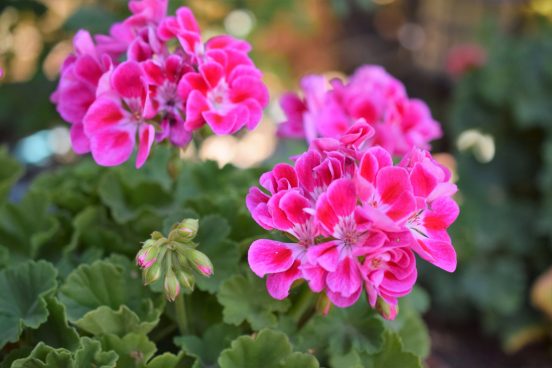
Propagating geranium cuttings in water is the easiest way to get lots more geranium plants FOR FREE! I love ivy and zonal geraniums (also known as pelargoniums). They are easy to grow in my hot arid climate and are almost always be in bloom, even in winter, which I LOVE. All it takes is a little know-how and a bit of patience and you will soon be up to your ears in geraniums!
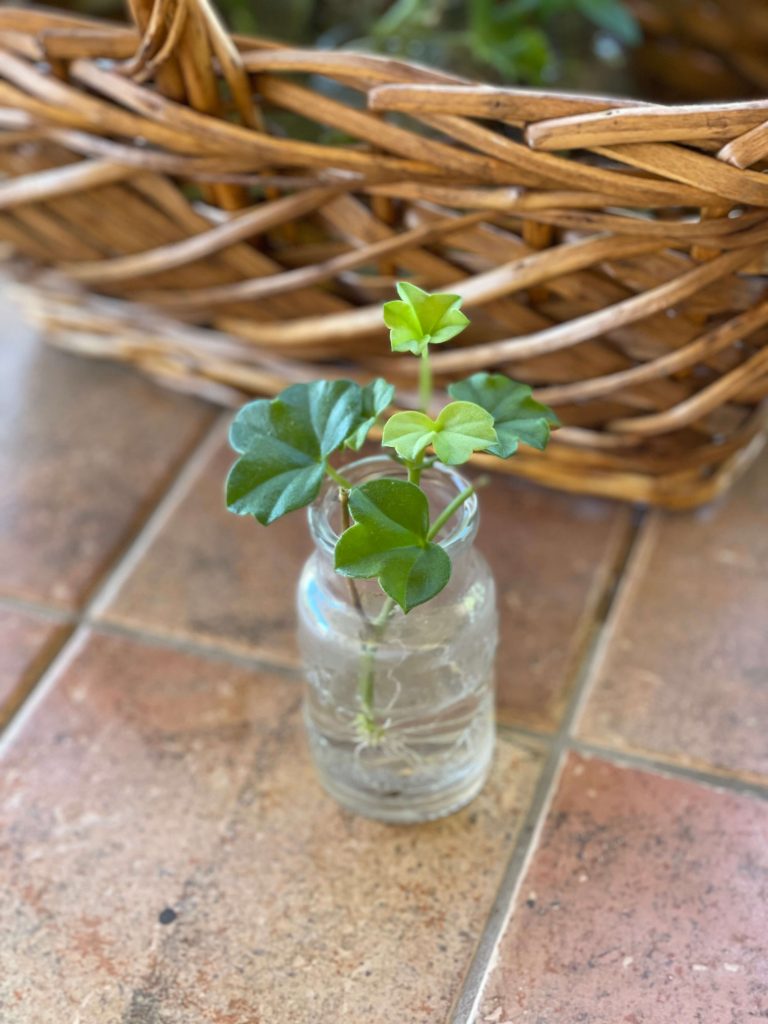
Disclaimer: when you shop through my affiliate links I earn a small commission which helps me create more content, at no additional cost to you! Thank you so much for your support!
Why Propagate Geraniums?
First, you may want to propagate geraniums to save money. With plants, and everything else, getting more expensive, it makes sense to let our mama plants provide us with free baby plants. Not only can you add to your own collection, you can give away plants as gifts to family, friends, and neighbors.
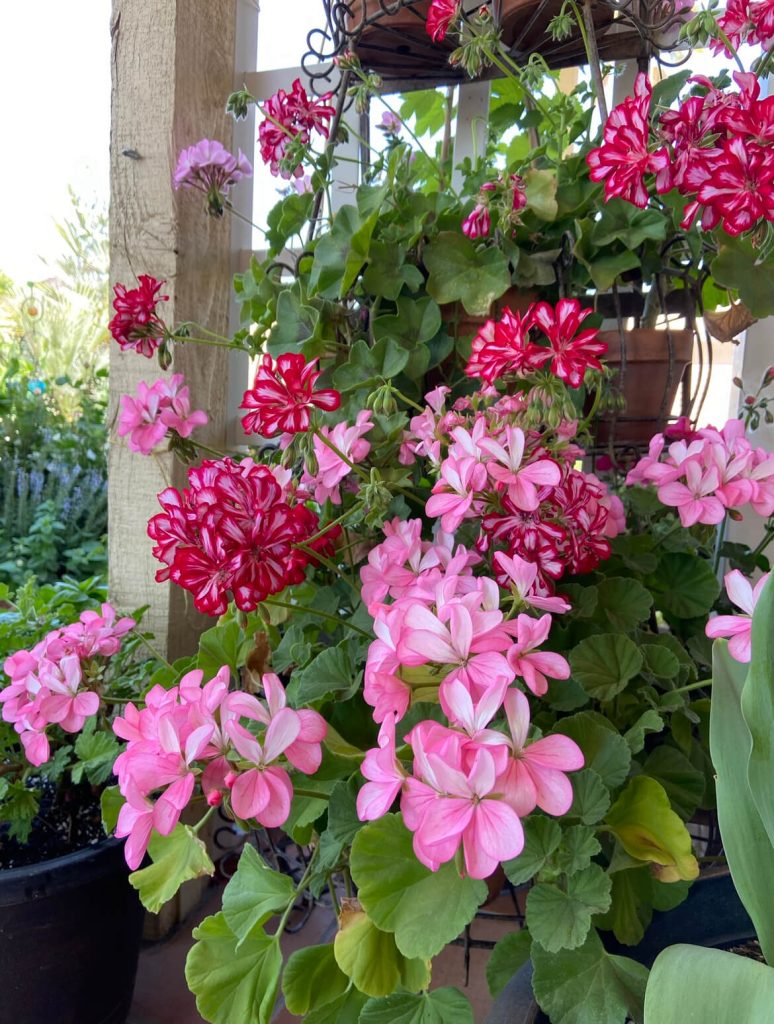
Second, propagating geraniums is a good insurance policy for any important varieties you might have. Have a special plant that your grandma gave you? Own a variety with an amazing bloom color that you NEVER see in the stores? Propagate them so you will always have a backup! Most plants will eventually decline so propagating them regularly will keep your collection fresh.
Third, geraniums will die off in winter in many zones. If your plant is large it may be difficult, and messy, to cart it indoors. It is often more practical to take cuttings towards the end of summer and grow those inside the house through winter. Then when temperatures warm up again in spring you can plant them outside and enjoy your geranium display all over again, without having to purchase new plants!
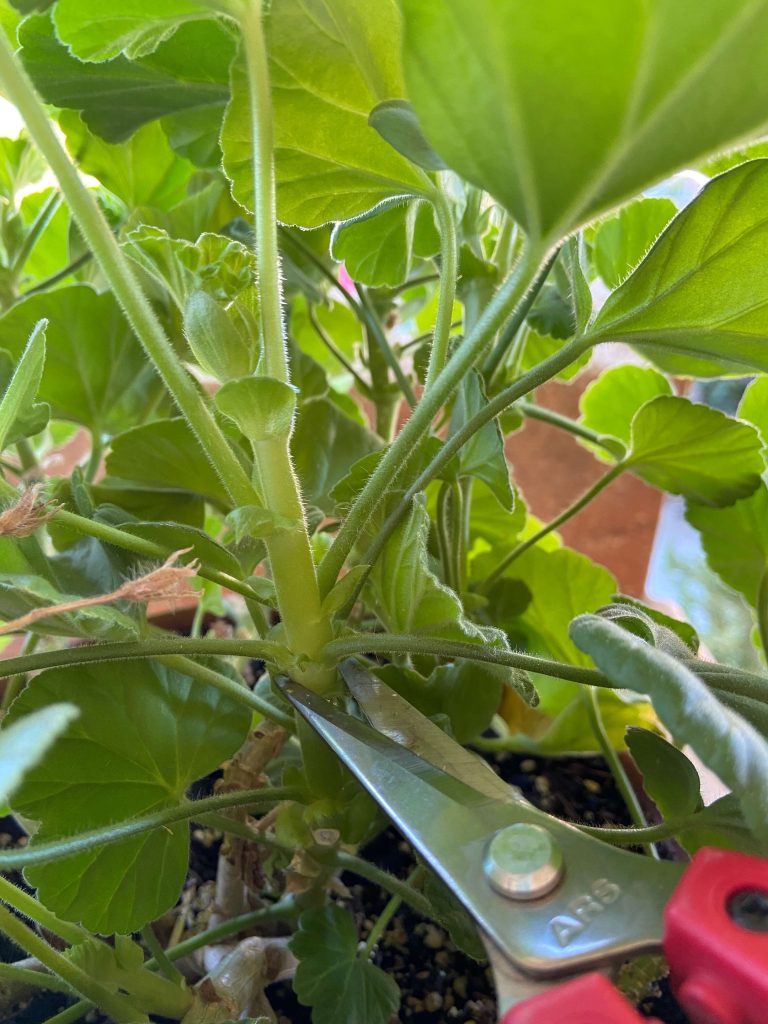
How to Propagate Geraniums in Water
Step One- Clip the Geranium Cutting from the Mother Plant
Make sure you take a cutting from a plant that is free of insects or disease. Snip a healthy, preferably non-flowering growing tip right below a set of leaves (see image above). Next, strip off any excess leaves or buds, leaving just one or two leaves at the top. If you only have a stem with a flower available, remove the flower.
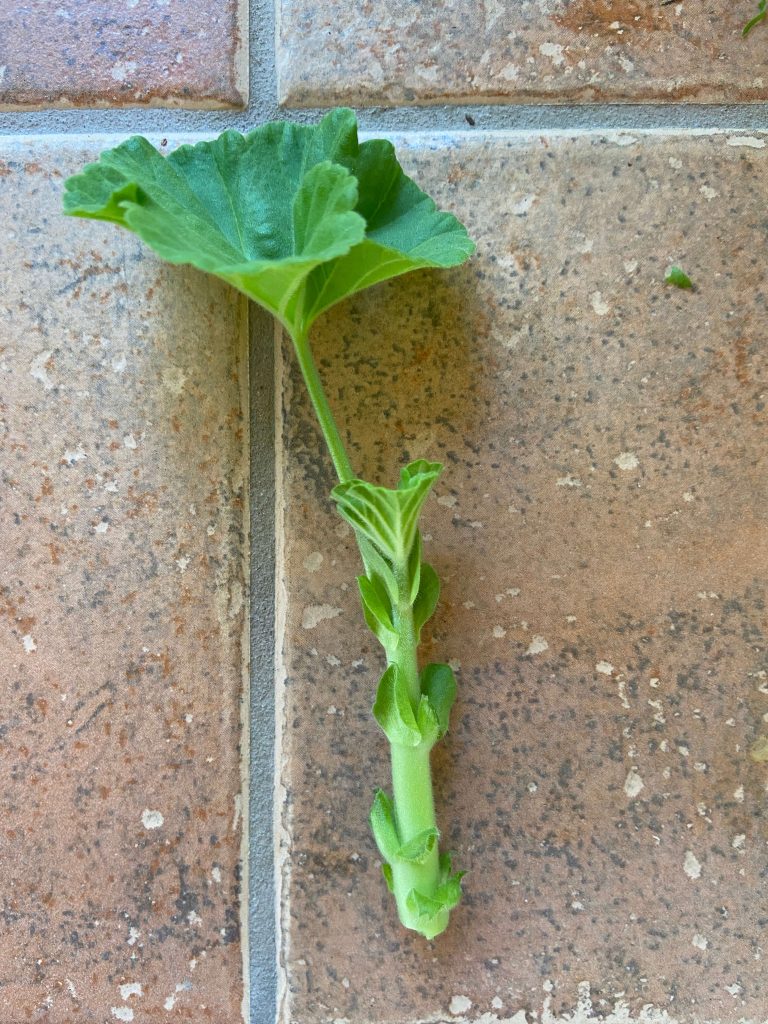
Step Two- Apply Rooting Hormone to the Geranium Cutting and Place in Water
I really think that rooting hormone is the key to success with geranium cuttings! In the past, I have placed cuttings in just plain water and they never rooted. I have had great luck with this rooting hormone powder. Pour out a tiny bit of the powder onto a piece of paper towel (so as not to contaminate your bottle) and dip the cut end of the cutting in the powder, making sure the cut and any spots where the leaves were removed are coated (see below). Then, place the cutting in a small vase of water. Make sure that no leaves are below the water level as this could lead to rot.
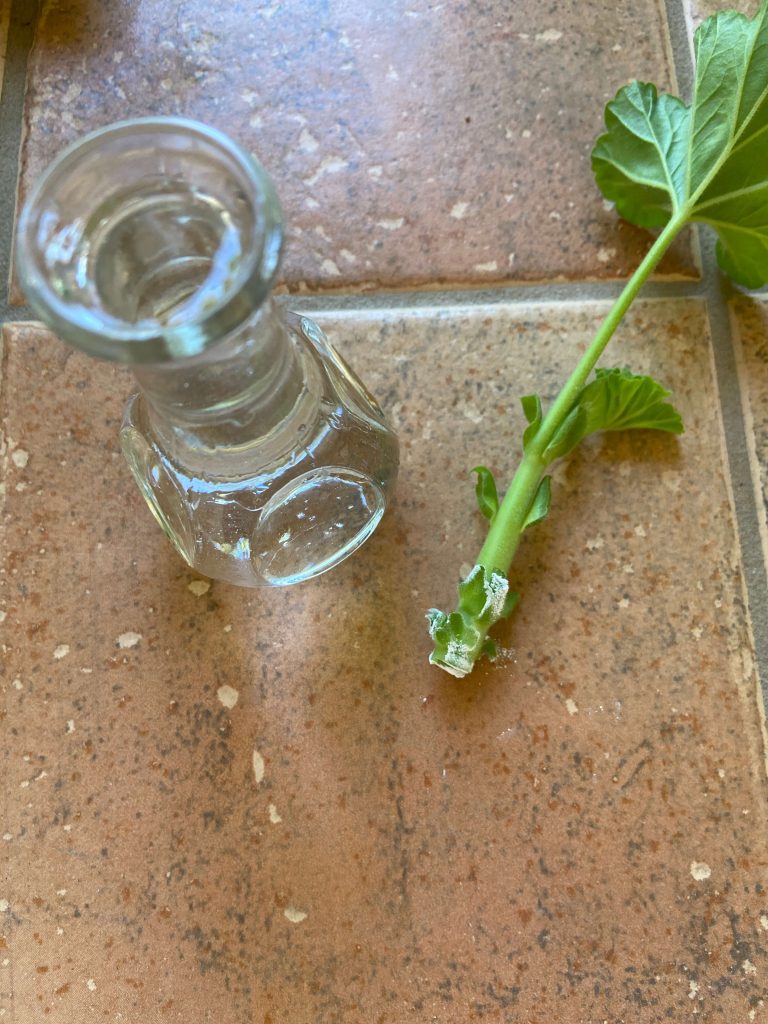
Keep the water in the vase topped up while you wait for roots to form. I have used a very small vase mainly because the narrow neck keeps the tip of the cutting from being submerged under water. I only replace the water if it becomes really murky.
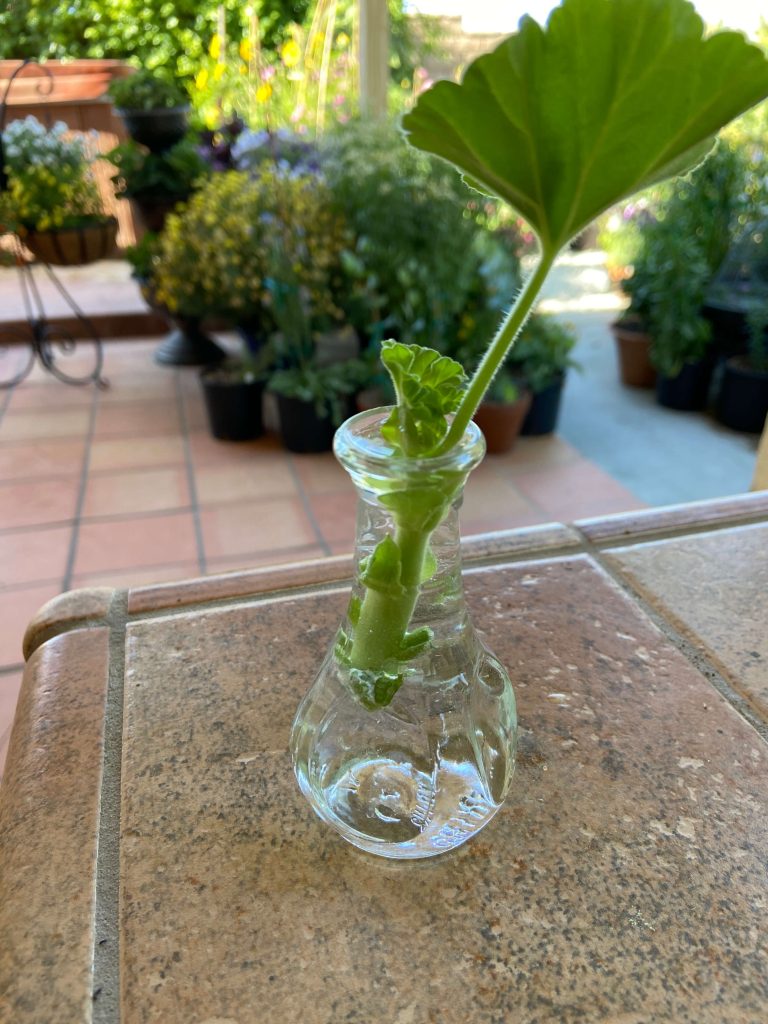
Step Three- Place the Geranium Cutting in a Sunny Spot and Wait
Now that your cutting is prepped, all you have to do is place it in a sunny window or under a grow light and wait. It will take several weeks for the geranium cutting to sprout roots. As long as it stays green do not give up hope. If the cutting turns completely brown it did not take and you will need to start over.
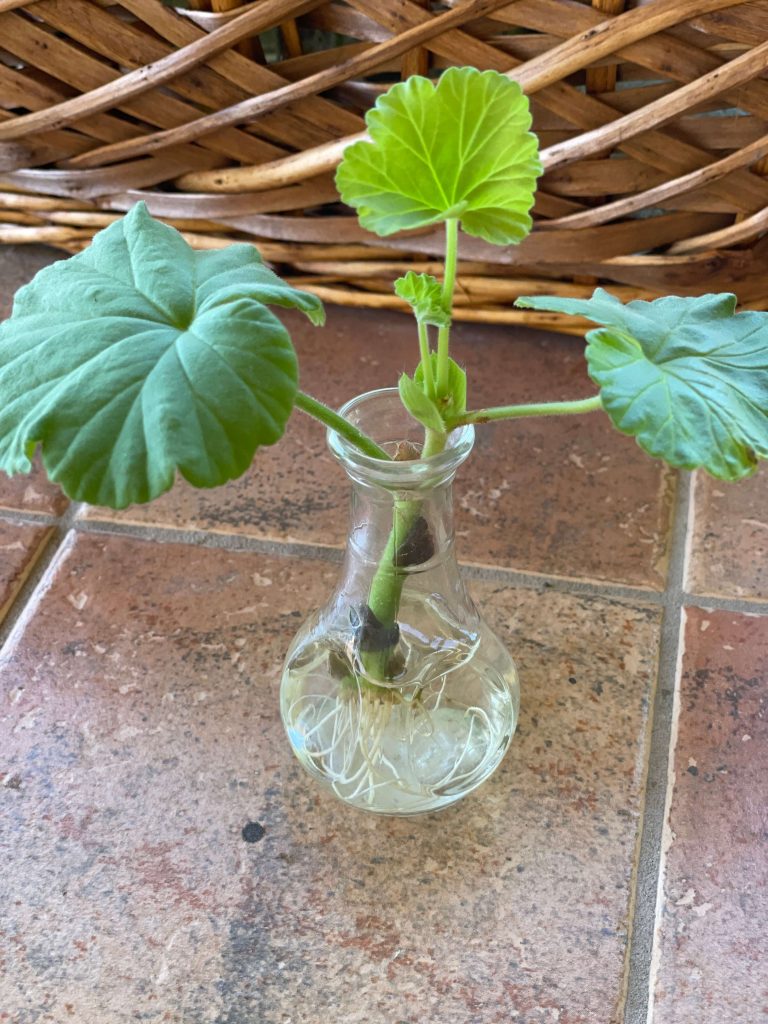
Step Four- Plant the Rooted Geranium Cutting
Once your geranium cutting has lots of strong roots it is ready to be potted up! It may have even grown a few leaves while it was rooting as mine did in the photo above. Plant your geranium cutting into a small pot, no larger than four inches. Geraniums are very sensitive to too much water and using a larger pot at this point could lead to soggy soil and rotted roots. Use a quality potting mix intended for container plants (my favorite is FoxFarm Ocean Forest!)
Leave your newly potted geranium baby indoors for a few days while it adjusts to the shock of being transplanted, and then slowly take it outdoors a little at a time until it becomes acclimated (this is called hardening off). After a few days, leave it outside in a sunny spot. For additional information on growing geraniums, check out this post.
One caveat about geraniums- budworms (moth caterpillars) LOVE them! If your geranium blooms are getting chewed to bits it could be budworms. A great treatment for budworms is Bacillus Thuringiensis (B.t.) and you can read more about it HERE.
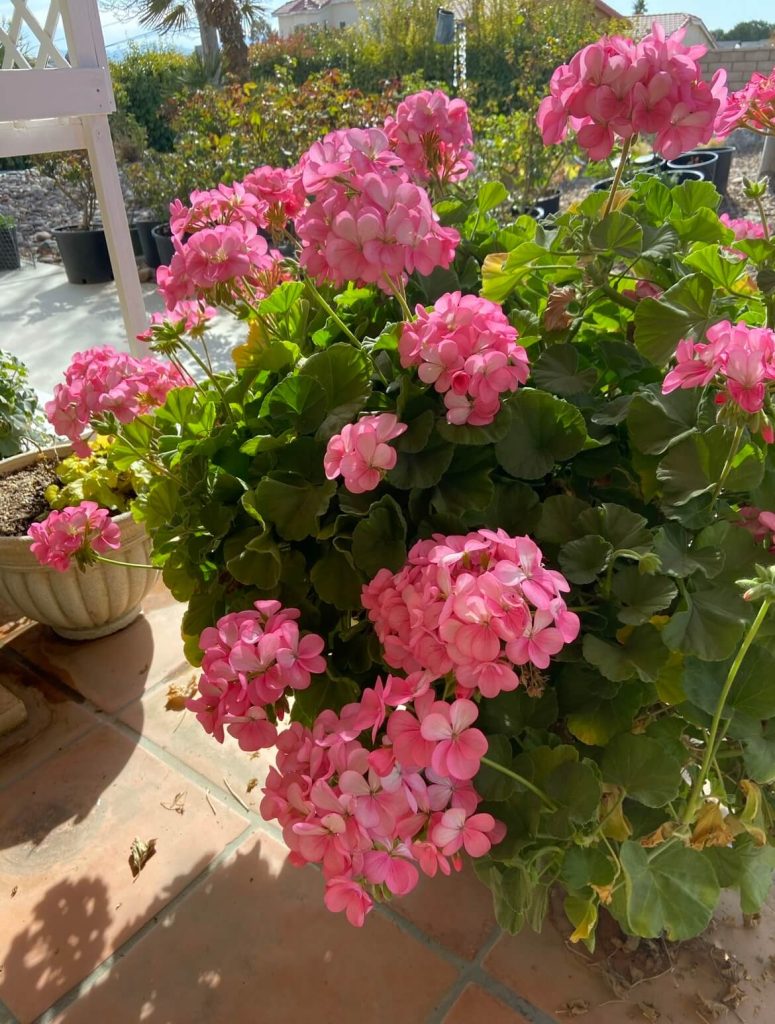
Thank you so much for stopping by! Let me know in the comments if you grow geraniums and if you plan on propagating them. And don’t forget to join me on Instagram!
Happy Gardening,
Heather
Love this article or want to save it to read later? PIN it!!!
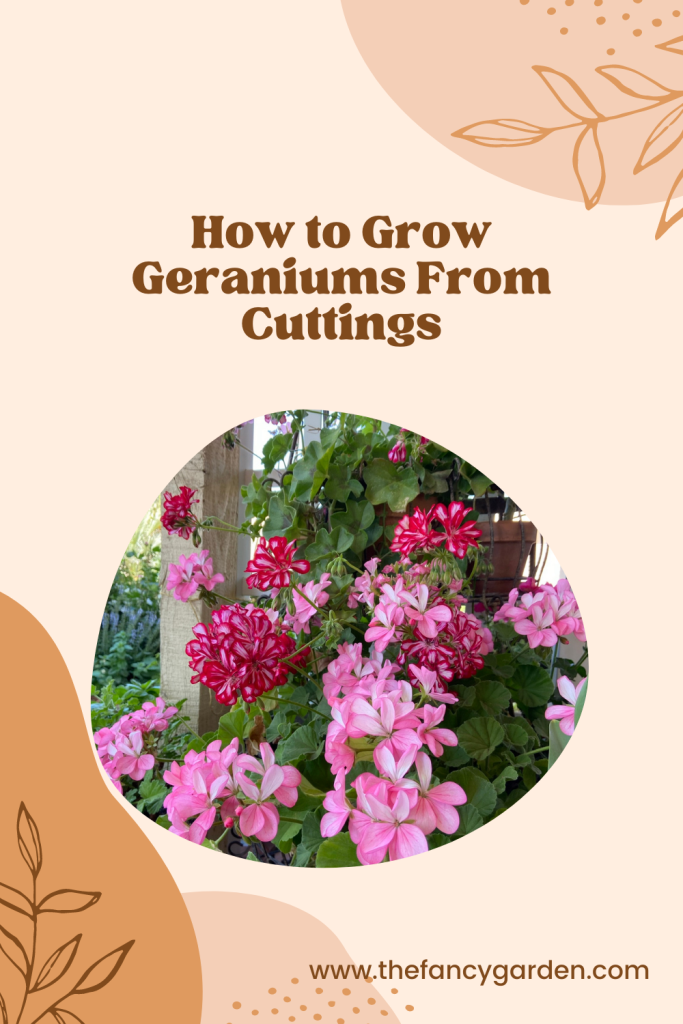
Related Posts
How to Easily Grow Beautiful Zonal Geraniums from Seed
When I discovered how easy it is to grow beautiful zonal geraniums (Pelargonium hybrids) from…
08/01/2023How to be Successful Growing Anemones in Pots
Anemones (Anemone coronaria) are one of my favorite flowers to grow in pots for a…
12/06/2022





Sheila Mountis | 15th Aug 22
Hi Heather
I really enjoyed reading your blog, and have signed up to your newsletter.
After the heatwave we have recently had in the UK (Norfolk), I have suffered quite a few casualties, and are researching plants that will withstand drought and extreme heat conditions. Hence I came across your site.
I had planted my hanging baskets this year with begonias, but alas, (although they have been watered daily) they are looking very sad. After reading your advice on Geraniums, that is what I will be using next year.
I look forward to receiving your updates and advice.
Kind regards
Sheila
Heather | 15th Aug 22
Hi Sheila,
So sorry to hear about your begonias and other casualties! Hot weather loving drought tolerant plants are a pretty big focus of mine so you are in the right place! I think geraniums in your hanging baskets will be lovely.